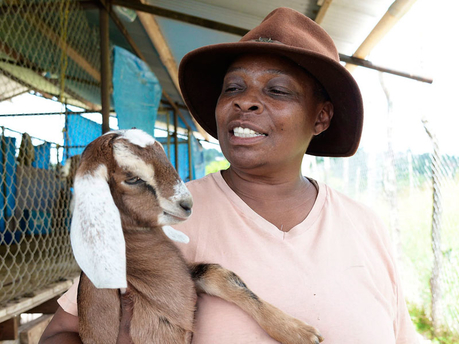Government Grants
Business Grants
Home Owner Programs
Federal Programs
About Us
Research and Development for Biological Control of Arundo Donax
A.
Short Description of Funding Opportunity ERDC seeks applications for:
evaluation of biological control for Arundo donax in southern California.
There is potential for at least two distinct projects to arise from this opportunity, including determination of optimal release and monitoring strategies for A.
donax biological controls, and evaluation of the impact of biological control on A.
donax water-use efficiency, growth, and biomass allocation.
B.
Background Giant cane is a large (4-8m tall) perennial grass native to western Asia and likely introduced into North America from Spain in the early 1500s, but now is widespread with considerable capacity for expansion in North America (Figure 1; Moran and Goolsby 2022).
Reproduction is solely clonal in the US and occurs through extensive rhizome networks or fragmentation.
Large knotty rhizomes form underground masses up to three feet thick and provide a source of regrowth following management.
Giant cane infests disturbed habitats near water and is particularly harmful in arid environments where it outcompetes other species and has extremely high water-use (Figure 2) (Seawright et al.
2009, Racelis et al.
2012, Goolsby et al.
2016).
In fact, giant cane was estimated to transpire 56,200 acre-feet of water per year on the Santa Ana River alone, which equates to serving approximately 190,000 people in an area known for droughts and at a potential municipal cost of $25M in lost water (Iverson 1993).
Figure 1. Habitat suitability for Arundo donax in the US, based on model outputs from INHABIT (USGS).
(See FOA) Costs of giant cane management near Los Angeles can exceed $250K per acre, due to the effort required for repeated herbicide applications, then subsequent biomass and sediment management.
Giant cane infestations have reduced the channel conveyance capacity of the Los Angeles River (at the Glendale neighborhood) from a 25-year storm event to a 2-year storm event where it impacts over 6000 people and risks $1B in property value.
There is interest in using biological control as a sustaining management tool for giant cane in California, but a lack of information about whether agents could be used under the conditions present in project areas has prevented its widespread implementation.
Figure 2. Representative giant cane infestations within the SPL AOR A) Los Angeles River at Glendale Narrows, B) Whittier Narrows, C) Santa Ana River, D) Rio Hondo.
(See FOA) Two biological control agents are approved to manage giant cane in California (Figure 3):
Tetramesa romana, the Arundo gall wasp, and Rhizaspidiotus donacis, the Arundo armored scale (CAL-IPC 2020).
Both agents are established in the US and have been used to successfully control giant cane infestations in Texas (Goolsby et al.
2014, Goolsby et al.
2016).
Additional releases and control monitoring is ongoing in northern California but, to date, there is insufficient data to inform their use in Southern California.
It has been suggested that biological control of giant cane will be most successful in areas with sufficient warming days (Marshall et al.
2018).
A previous assessment found Ventura/ Oxnard, CA to have relatively low number of warming days compared to locations in south Texas where control has been successful, but other warmer locations in California, such as parts of Los Angeles County, may be better suited for a biological control program.
C.
Program Description/Objective:
The following objectives summarize the work for a maximum of three (3) unique, stand-alone projects.
Over the life of the cooperative agreement (5 years), it is anticipated that 3 projects would be completed.
Objective 1:
Investigator will collaborate with ERDC researchers to develop a biological control plan to investigate the types and magnitudes of control for giant cane.
Objective 2:
Determine best Arundo donax biological control release and establishment approach through either 1) natural increase of incidental populations, 2) traditional release-and-wait types of programs, or 3) inundative releases.
Objective 3:
Determine impact of biological control on Arundo donax metrics that are relevant to invasive species management and flood conveyence, to potentially include giant cane stem density, water use / transpiration, vegetation diversity, plant stature, and control agent dispersal related to flooding.
Partner will work with ERDC to compile results, conduct statistical analysis, and synthesize into guidance document.
Short Description of Funding Opportunity ERDC seeks applications for:
evaluation of biological control for Arundo donax in southern California.
There is potential for at least two distinct projects to arise from this opportunity, including determination of optimal release and monitoring strategies for A.
donax biological controls, and evaluation of the impact of biological control on A.
donax water-use efficiency, growth, and biomass allocation.
B.
Background Giant cane is a large (4-8m tall) perennial grass native to western Asia and likely introduced into North America from Spain in the early 1500s, but now is widespread with considerable capacity for expansion in North America (Figure 1; Moran and Goolsby 2022).
Reproduction is solely clonal in the US and occurs through extensive rhizome networks or fragmentation.
Large knotty rhizomes form underground masses up to three feet thick and provide a source of regrowth following management.
Giant cane infests disturbed habitats near water and is particularly harmful in arid environments where it outcompetes other species and has extremely high water-use (Figure 2) (Seawright et al.
2009, Racelis et al.
2012, Goolsby et al.
2016).
In fact, giant cane was estimated to transpire 56,200 acre-feet of water per year on the Santa Ana River alone, which equates to serving approximately 190,000 people in an area known for droughts and at a potential municipal cost of $25M in lost water (Iverson 1993).
Figure 1. Habitat suitability for Arundo donax in the US, based on model outputs from INHABIT (USGS).
(See FOA) Costs of giant cane management near Los Angeles can exceed $250K per acre, due to the effort required for repeated herbicide applications, then subsequent biomass and sediment management.
Giant cane infestations have reduced the channel conveyance capacity of the Los Angeles River (at the Glendale neighborhood) from a 25-year storm event to a 2-year storm event where it impacts over 6000 people and risks $1B in property value.
There is interest in using biological control as a sustaining management tool for giant cane in California, but a lack of information about whether agents could be used under the conditions present in project areas has prevented its widespread implementation.
Figure 2. Representative giant cane infestations within the SPL AOR A) Los Angeles River at Glendale Narrows, B) Whittier Narrows, C) Santa Ana River, D) Rio Hondo.
(See FOA) Two biological control agents are approved to manage giant cane in California (Figure 3):
Tetramesa romana, the Arundo gall wasp, and Rhizaspidiotus donacis, the Arundo armored scale (CAL-IPC 2020).
Both agents are established in the US and have been used to successfully control giant cane infestations in Texas (Goolsby et al.
2014, Goolsby et al.
2016).
Additional releases and control monitoring is ongoing in northern California but, to date, there is insufficient data to inform their use in Southern California.
It has been suggested that biological control of giant cane will be most successful in areas with sufficient warming days (Marshall et al.
2018).
A previous assessment found Ventura/ Oxnard, CA to have relatively low number of warming days compared to locations in south Texas where control has been successful, but other warmer locations in California, such as parts of Los Angeles County, may be better suited for a biological control program.
C.
Program Description/Objective:
The following objectives summarize the work for a maximum of three (3) unique, stand-alone projects.
Over the life of the cooperative agreement (5 years), it is anticipated that 3 projects would be completed.
Objective 1:
Investigator will collaborate with ERDC researchers to develop a biological control plan to investigate the types and magnitudes of control for giant cane.
Objective 2:
Determine best Arundo donax biological control release and establishment approach through either 1) natural increase of incidental populations, 2) traditional release-and-wait types of programs, or 3) inundative releases.
Objective 3:
Determine impact of biological control on Arundo donax metrics that are relevant to invasive species management and flood conveyence, to potentially include giant cane stem density, water use / transpiration, vegetation diversity, plant stature, and control agent dispersal related to flooding.
Partner will work with ERDC to compile results, conduct statistical analysis, and synthesize into guidance document.
Related Programs
Basic, Applied, and Advanced Research in Science and Engineering
Department Of Defense
Agency: Department of Defense
Office: Engineer Research and Development Center
Estimated Funding: $395,000
Office: Engineer Research and Development Center
Estimated Funding: $395,000
Obtain Full Opportunity Text:
THIS IS NOT AN ACTIVE LINK. PLEASE CLICK ON THE WORDS "FULL ANNOUNCEMENT" AT THE TOP OF THIS PAGE.
Additional Information of Eligibility:
This opportunity is restricted to non-federal partners of the Californian Cooperative Ecosystems Studies Unit (CESU).
Full Opportunity Web Address:
THIS IS NOT AN ACTIVE LINK. PLEASE CLICK ON THE WORDS "FULL ANNOUNCEMENT" AT THE TOP OF THIS PAGE.
Contact:
Agency Email Description:
Stacy Thurman
Agency Email:
Date Posted:
2025-02-12
Application Due Date:
Archive Date:
2025-12-31
Social Entrepreneurship
Spotlight
Social Enterprise Boost Initiative For Mushroom Farming

The Network of Women (NOW) For Food Security joined forces with Jamaica National Foundation’s Social Enterprise Boost Initiative (SEBI) and Food For The Poor (FFP) to provide rural women income-producing opportunities and reduce the amount of imported mushrooms.

